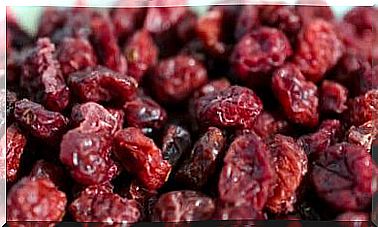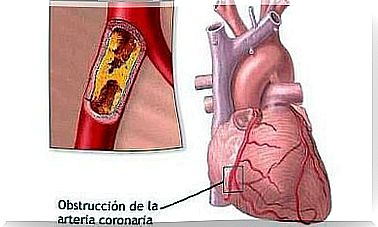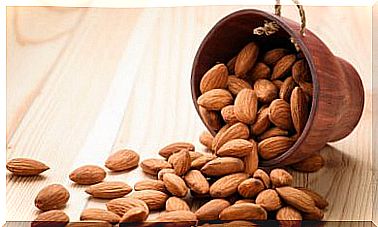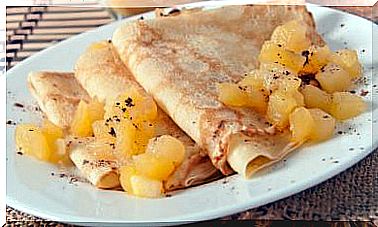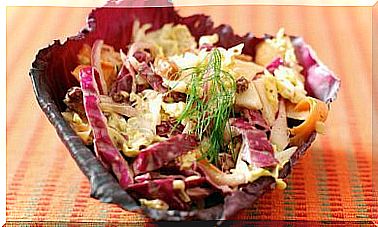Broad Beans: Properties And Contraindications
Halfway between legumes and vegetables, beans have the properties of both and become a very healthy food to add to the daily menu.
When temperatures are cold, you really want to eat an Asturian bean stew, Catalan beans (with bacon and sausage) or with ham. But it is also possible to cook them in the form of salads, stir-fries or omelettes.
Broad beans: one of the oldest legumes
The broad bean plant belongs to the fabaceae or legume family. This means that it is in the same group as legumes, such as chickpeas or lentils. This would be the case of dry seeds that can be found out of season.
However, fresh beans are similar to peas and nutritionally more similar to vegetables than legumes. In addition, they are tender and it is possible to consume them raw, since their texture is soft. When cooking, a previous soaking process is not necessary.
This fact also conditions its nutritional values and the contribution of macronutrients. Moreover, they have nothing to envy to healthy legumes, as they contain valuable components that give them beneficial health properties.
Properties and health benefits of beans
Although they are seeds of a rather small size, they present a good concentration of nutrients, such as protein, fiber, folates, phosphorus, magnesium, iron and copper. It is thanks to them that its introduction within the framework of a healthy diet carries some positive effects.
Prevention of anemia
One of the minerals that contribute in moderate quantity is iron. This is necessary in the production of hemoglobin, which in turn is responsible for transporting oxygen to all cells in the body.
Low iron levels can lead to anemia, the symptoms of which are weakness, fatigue, and shortness of breath.
This is of special interest to women with heavy periods and to people who follow vegan diets. With beans, they increase the variety of foods with iron, which is better absorbed in the presence of vitamin C.

Fava beans and their properties for cardiovascular health
It is becoming increasingly clear that a diet rich in vegetables and fruits is one of the keys to protecting yourself from heart disease.
Reducing LDL cholesterol in the blood is one of the objectives and scientific evidence shows that this can be achieved with the presence of soluble fiber in the diet.
In a study by the National Cancer Institute of the United States, published in the Archives of Internal Medicine , it was observed that people with a higher fiber intake had lower mortality. And not only were they longer lived, but they also reduced their risk of cardiovascular, infectious and respiratory disease.
Prevention of neural tube defects
As a food rich in folates, fava beans can be present on a regular basis in the diet of pregnant women. The Centers for Disease Control and Prevention notes that they should take 400 micrograms of folic acid along with a diet rich in folates.
This nutrient helps prevent neural tube defects that can translate into serious illnesses for babies, such as anencephaly or spina bifida.
Allies in weight loss
On a nutritional level, beans provide a moderate amount of calories. They are light thanks to the presence of water and a low percentage of fat. In addition, the amount of protein and fiber per serving is high compared to the vast majority of vegetables.
This makes them a good choice for those who want to lose weight and follow weight loss diets. Recent scientific evidence has found that higher protein intake increases thermogenesis and satiety.
In addition, it has also been linked to a lower subsequent energy intake. The same happens with fiber, preferably the one that is present naturally in food and not via supplements.
Digestive problems improved with the properties of beans
The soluble fiber contained in beans gives it even more positive effects. On the one hand, it increases the volume of stool and facilitates its passage through the intestine and colon. Its presence reduces the risk of hemorrhoids and diverticula.
Furthermore, this component is the food of the intestinal bacteria and allows their development in number and variety. As a consequence, it improves the response to pathogens and the condition of the colon mucosa and cells.
Fava beans contraindications
As has been seen so far, the consumption of beans has very positive health properties. However, it is also important to keep in mind that sometimes they can lead to problems.
The clearest case is that of favism, a genetic abnormality caused by the lack of the enzyme glucose 6-phosphate dehydrogenase (G6PD). It is characterized by the sudden appearance of severe anemia episodes, which are generated with the intake of some medications or foods such as beans and their derivatives.
The accompanying signs are as follows:
- Dark urine
- Pallor.
- Yellow coloring in the eyes.
- Abdominal pain.
It is the most common enzyme deficiency in the world and is a frequent disorder in some specific geographic areas, such as southern Europe and Asia. People who suffer from it can lead a normal life if contact with the causative agents is avoided.
In the general population, the consumption of beans can lead to some digestive problems such as gas and flatulence. These improve with a moderate intake and if they are accompanied by plants such as cumin, bay leaf, mint, garlic and fennel.
Recipe for beans with peas
A rich and healthy dish prepared with vegetables, very easy to cook and with excellent results, is that of beans with peas. Know its ingredients and the step by step.
Ingredients needed for 4 servings
- 800 grams of frozen peas.
- 400 grams of frozen beans.
- 1 large onion.
- 2 potatoes
- 1 teaspoon of saffron threads.
- 2 cloves of garlic
- Peppermint.
- 2 bay leaves
- 100 grams of ham york to taquitos.
Step by Step
- First, peel and dice the onion and garlic into very small cubes. Sauté in a pan with olive oil and the two bay leaves. When they are a little browned, add the ham and sauté for a few minutes.
- Then add the beans along with the mint. Let the whole cook for another 10 minutes.
- Then it’s time to add the peas and potatoes, peeled and diced. Optionally, it can be washed down with a little white wine.
- Cover with water about two fingers above the ingredients and simmer until the peas and beans are tender.
Poached peas and beans can be served and served in many ways. In this recipe the ham is introduced, but it is also possible to use a little bacon or sausage. Or serve with a poached egg at the last minute.
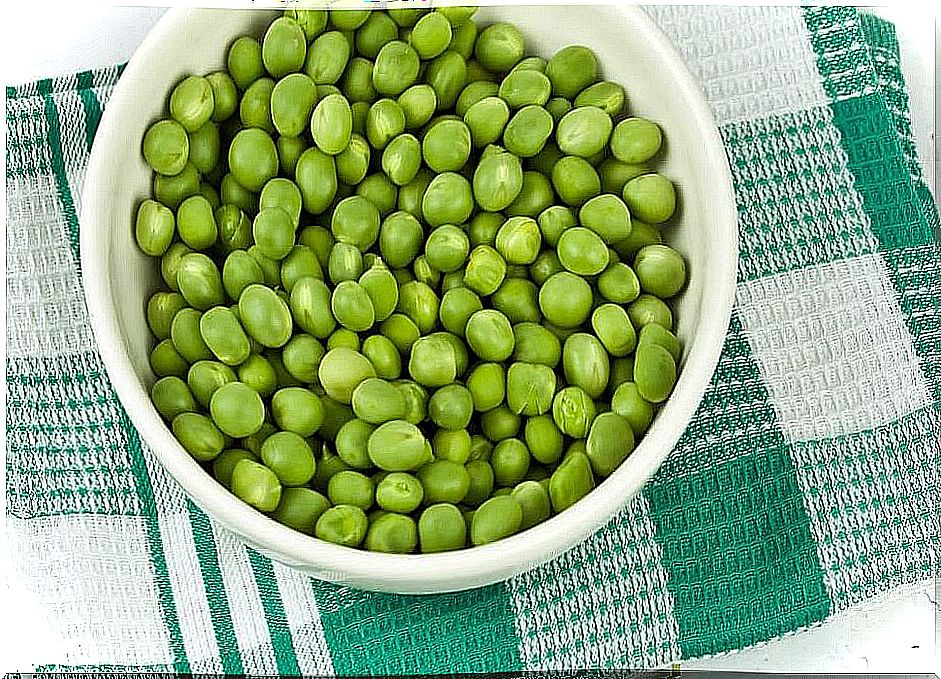
The essentials to enjoy broad beans and their properties
The best fresh beans in pods are the green ones. They are crispy and break easily. They keep in the fridge for at least 2 to 3 days.
Another possibility is to buy dried beans, which, like other legumes, have a longer shelf life. Today there are also frozen and canned.
Both fresh and dried are a very healthy food that should be recovered in the daily diet. If they are accompanied by a diet and healthy lifestyle habits, they can be positive for cardiovascular health, the digestive system and overweight problems.
In some countries it is tradition to hide a bean in the roscón de Reyes. But after knowing their benefits and the multiple ways to prepare them, they will surely be more present at many tables.
